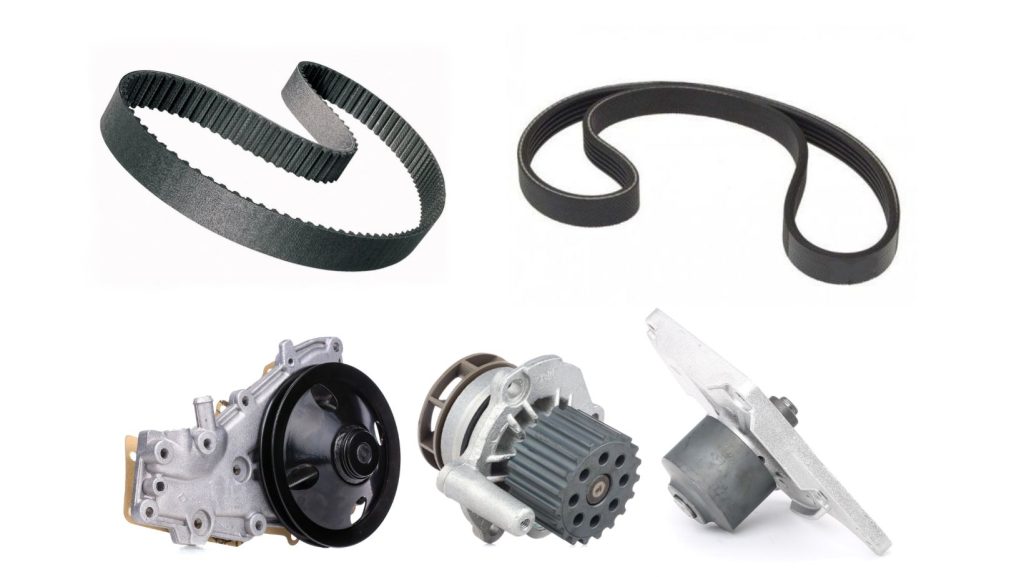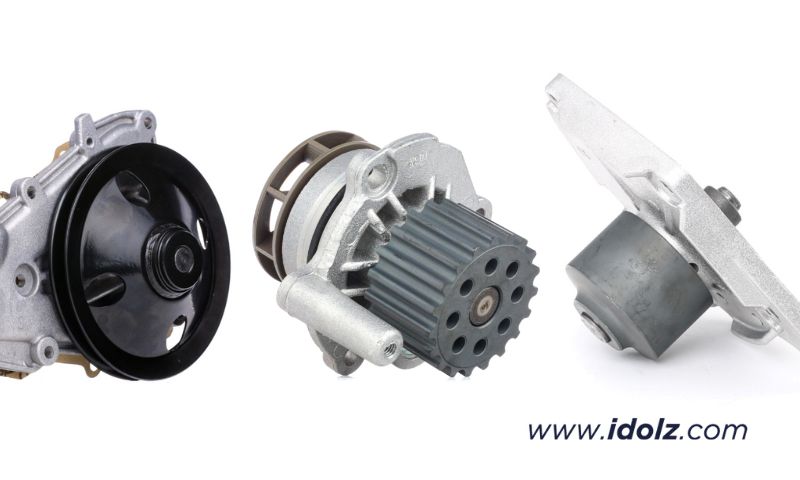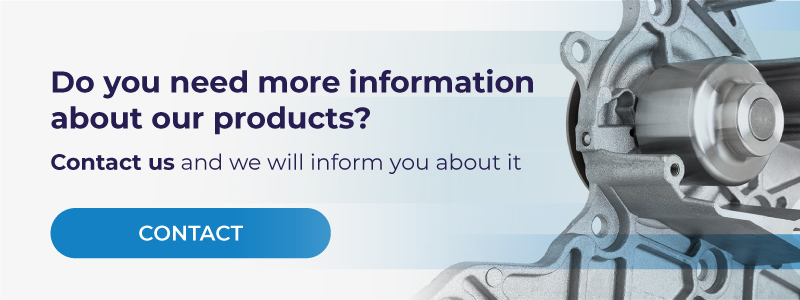The water pump is a vital part of a vehicle’s cooling system. Its correct operation allows the constant stream of coolant throughout the system, guaranteeing the thermal balance of the engine. In today’s article we focus on some basic aspects of its mechanics and qualities, highlighting the water pump drive, its pulley and the different drive modes it shows. Let’s start.
Water pump location
Depending on the configuration of each application, mechanical water pumps can be housed outside/externally on the engine or flanged directly on the engine block.
- Externally on the engine:
The water pumps that are housed outside the engine are driven by a belt that normally also drives other auxiliary groups such as the alternator or the vehicle’s air conditioning compressor. That’s why the power transmission is carried out using poly-V belts or multi-ribbed belts.
- Flanged directly on the engine block:
When the water pump is on the engine block, it is normally driven by a timing belt. Most water pumps are housed there and, although their structure is usually less complex, generally due to the place where they are located, a greater effort is required during their replacement. Here’s why: the water pump isn’t easy to get at, to access them it is also necessary to disassemble the belt of distribution.
Water pump drive: Belt Drives & Types of Belts
Must be remembered, as we have seen in previous posts, each of the components in mechanical water pumps plays a very important job in its operation. When talking about the drive, it is necessary to explain the role played by the pulley in transferring the movement of the belt to the axis of the bearing.
Specifically, if the water pump pulley becomes loose or fails, it can cause problems with the cooling system, such as overheating. And conversely, if the pulley is not attached to the water pump shaft, it must be screwed onto the water pump plate. Therefore, if we talk about a water pump, we also must talk about how it is driven and who activates it, due to not all water pumps are designed equal in terms of drive and rotation.
Depending on where they are fitted, the water pumps are usually driven via V-belts, gears, or poly-v/ribbed belts. To do this, we will first differentiate between a mechanical pump and an electric water pump:
The mechanical water pump takes the energy from the engine itself and can be driven by the multi V-belt, by the V-belt or by a toothed belt. Its speed being directly linked to the speed of the engine itself.
On the other hand, the electric water pump is completely unrelated to engine speed. The difference with a mechanical pump is that rather than being driven from a belt off the crankshaft, it is driven by an electric motor, adjusting the power of the pump based on the needs of the system.
Types of belts
Depending on the engine in each vehicle, each water pump corresponds to one or the other type of belt system, hence the profile of its pulleys is of one type or another.

Here is a brief explanation of the types of belt that can drive the water pump:
- V-belt
V-belts are belts with a trapezoidal cross-section. With permanent contact of the V-section of the belt with the water pump pulley, tension is key to optimal performance. In current vehicles, it is a belt that is rarely used to move water pumps (engines used this type of belt but slowly evolved to toothed belts).
- Toothed belt
Most current are toothed belts. Force is transmitted via the teeth without slip and over time, a variety of tooth profiles have established themselves. The water pump, power steering pump, alternator, air conditioning… are powered by a single belt, with very low friction. Unlike with the V-belt, the tension is not so important.
The teeth of the belt mesh with both the crankshaft and camshaft(s), thereby synchronising their motion.
As regards the water pump, it can work on the smooth part or on the toothed part of the timing belt.
- Multi V-belt/ribbed belt
Poly-V belts are typically used in accessory systems. With this type of belt, the tendency for V-belts to “flip over” in the pulley groove is eliminated, and it is also much easier to maintain and replace.
With a large number of V-shaped longitudinal ribs, the multi poly-V belt has the advantage of its reduced thickness and weight, so it is very flexible. Besides, increases belt life and mechanical efficiency.
Besides, consume less engine space as it’s only a single belt running past and powering all the necessary engine accessories, including in some cases the water pump.
Maybe you are interested: SKD250A: Auxiliary drive Belt tensioner for hybrid applications
About DOLZ
Dolz provides a comprehensive solution by supplying with each water pump all the necessary components for mounting (gasket, bolts, etc.) ensuring that proper operation is achieved, minimizing the possibility of breakdown and wear after replacement.
Do you need spare parts? Do you have doubts about our product lines? Don’t hesitate to contact our team by sending an email to dolz@idolz.com.


